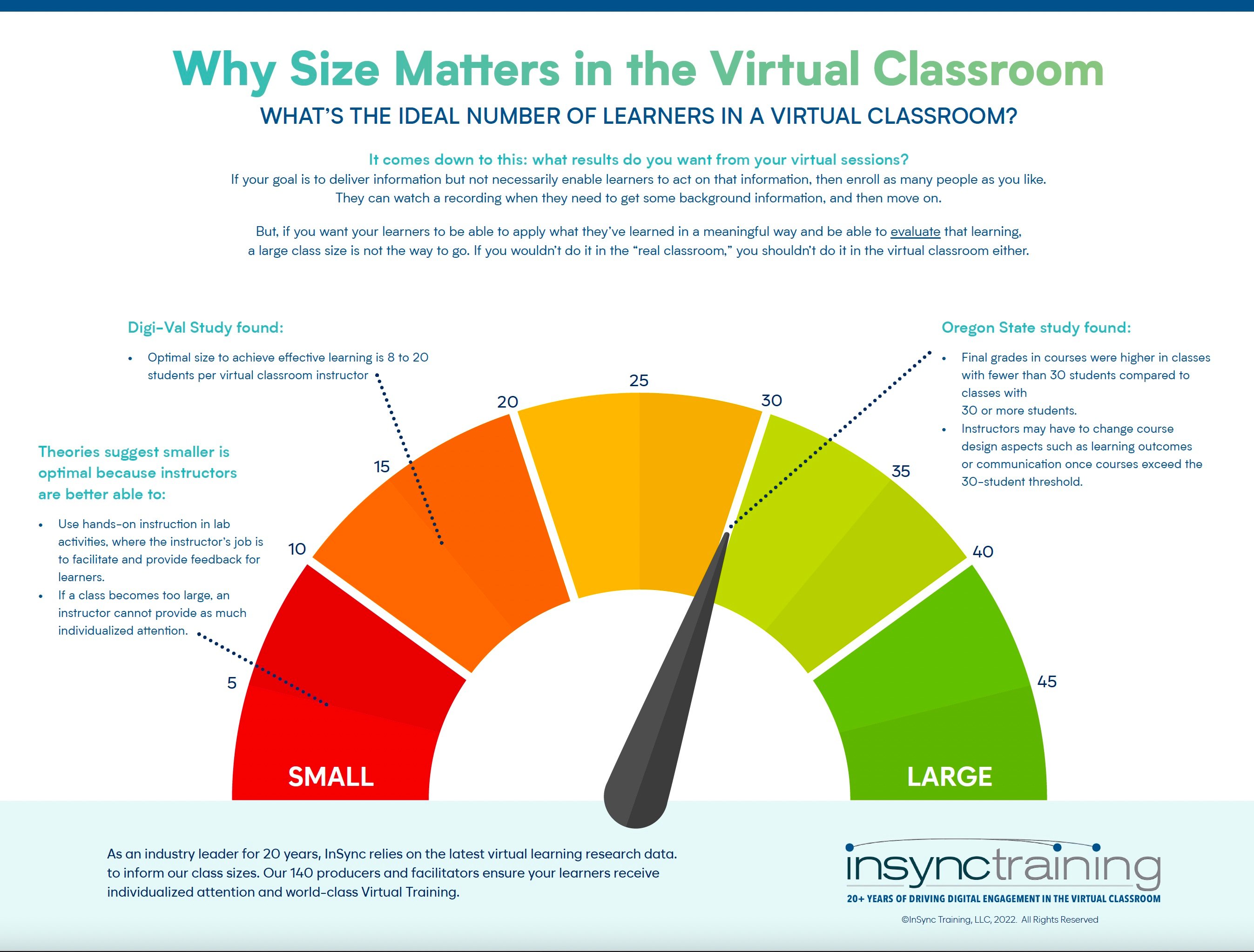1 min read
Virtual First - A Lasting Outcome of the 2020 Pandemic
Welcome to 2021. It seems that everyone is taking a collective breath as we look forward with expectation of promise and insight in a new workplace...
2 min read
InSync Training : Jul 29, 2020 9:00:00 AM

 Like in all professions, Learning & Development faces its fair share of challenges. Changing global dynamics, evolving business needs, and a diverse audience all contribute to a complex, and confusing, pathway forward.
Like in all professions, Learning & Development faces its fair share of challenges. Changing global dynamics, evolving business needs, and a diverse audience all contribute to a complex, and confusing, pathway forward.
The virtual classroom offers a solution to many of the broad obstacles training functions face. This learning environment supports organizations of all sizes and types, while seamlessly integrating into comprehensive, personalized, easily updated blends. And while the live online training environment provides flexibility and results, it does come with obstacles. By considering them ahead of time, you can avoid the pitfalls that will derail desired progress.
To help you through the buy-in, adoption, and transition process, we asked our team: “What is the most common challenge you encounter with virtual learning?” Their answers – and solutions – give you the information you need to get ahead in the virtual classroom:
Challenge: “Practitioners not being trained on virtual delivery.” - Virginie C.
Solution: Trainers spend their entire careers supporting their peers, and ensuring they have the soft skills and technical qualifications to excel on the job. Surprisingly, though, learning professionals often neglect the time to devote to their own upskilling. They frequently depend on learning from experience, rather than structured learning. Our team strongly recommended that all trainers switching from face-to-face delivery to facilitating virtually invest in their own professional development. Take a technical training class in the platform you’ll work in, hire a coach for one-on-one targeted improvement, or register for a specialized certificate program. These steps not only alleviate the stress you will feel in a new delivery environment, but also help you hone the specialized techniques and approaches you need for success.
Challenge: “I find that the biggest challenge is linked to the limits – or lack thereof - of the virtual classroom technology.” - Manuel C.
Solution: New virtual classroom platforms and internal features emerge every single day. As technologies advance, so do the opportunities for increased learner engagement and improved learner experience. Conversely, though, instructional designers, facilitators, and producers all have to know the capabilities available in the virtual classroom environment to take full advantage of the tools while also avoiding disaster. Once again, the team suggests ongoing education for the instructional team. Miguel shared, “Update and train in the different platforms and elements that technology offers to achieve a more successful virtual space.” Read platform help forums. Connect with peers or colleagues to share lessons learned. Review advice from the experts or search for practical training workshops.
Challenge: “Dry presenters with seemingly no energy or enthusiasm for what they are presenting.” - Shauna S.
Solution: Stakeholders aren’t the only party that has to buy-in to the value, efficacy, and possibility of the virtual classroom. Facilitators need to invest in the process too. Shauna urges new virtual trainers to, “make your presentation style one you’d also want to attend.” Learners know when the instructor doesn’t believe in the virtual training. They can literally feel the apprehension, nerves, and frustration with the learning environment. To combat this, Karen V. also urges learning teams to launch their virtual classroom initiatives with trainers excited and invested in the new model. Those trainers not only become the advocates to their peers, but also lay the foundation for widespread adoption.
These three challenges speak to the fundamental problems organizations face when introducing the virtual classroom to their training function. Professional development, technology considerations, and buy-in combat the challenges most likely to hinder the forward progress of modern virtual blends.

1 min read
Welcome to 2021. It seems that everyone is taking a collective breath as we look forward with expectation of promise and insight in a new workplace...

As an industry leader for 20 years, InSync continually relies on the latest virtual learning research data to inform our class sizes. Our 140...
%20Blog.png)
More virtual classroom events than ever have happened in 2020. In fact, the CEO of Cisco announced that Webex hosted 5.5 BILLION minutes of virtual...